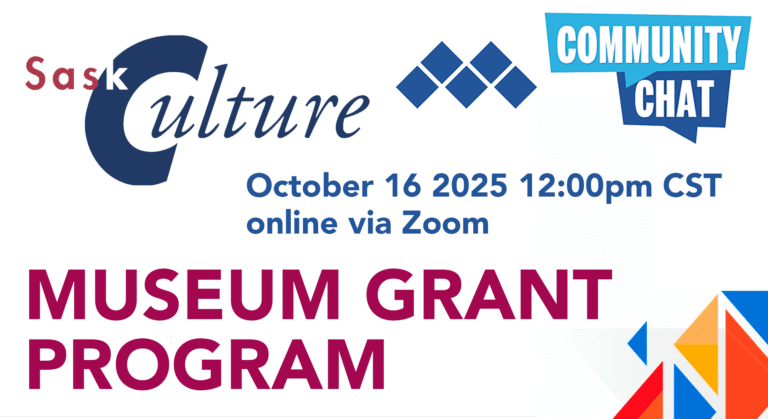
The MAS office will be closed for Christmas Holidays December 24th to January 4th.
Usual office hours will resume on January 5th, 2026
Firearms in the Museum: Are They Safe?
Kathleen Watkin (MAS Advisor) and Wendy Fitch (MAS Executive Director)
It has come to the attention of Museum Association of Saskatchewan that one of our member museums experienced the theft of nine hand guns this summer from a display case. This is an extremely worrying situation for us, and we would like to share some general information with you explaining why it is VERY IMPORTANT to decommission and safely secure guns that are part of any museum collection; whether on display or in storage.
Why Gun Safety in Museums Is So Important:
We don’t want to see anyone get hurt by a museum-owned gun
Stolen guns can be sold, and if not decommissioned correctly, the may be used to commit crimes.
Even if a gun has been decommissioned, and then stolen, how are the police to know if the gun is not able to be fired? If a decommissioned firearm is used to commit a crime, the criminal may be injured or killed because the police must assume that the gun is loaded, and they are trained to react to that threat accordingly.
If someone tried to fire the stolen gun it could backfire or explode, causing serious injury or death.
License Requirements In Canada:
Under Canadian Law, a museum is required to hold a Firearms Lincense for Business in order to legally possess and display “ammunition, firearms, restricted or prohibited weapons, or prohibited devices.” All employees, including volunteers, who handle the firearms must have a valid Possession and Acquisition License (PAL).
To see a description of what the RCMP’s defines as “Restricted” and “Prohibited” weapons, see: http://www.rcmp-grc.gc.ca/cfp-pcaf/fs-fd/clas-eng.htm
To apply for a “Firearms License for Business” (including museums), please contact the Saskatchewan Chief Firearms Officer at 1-800-731-4000 ext. 8502 or 1-306-780-5912
To get a PAL License, see RCMP 5592/ CAFC 921E at http://www.rcmp-grc.gc.ca/cfp-pcaf/form-formulaire/index-eng.htm#f1
For more information, see Royal Canadian Mounted Police (2015) Firearms Businesses (including museums). Retrieved from www.rcmp-grc.gc.ca/cfp-pcaf/fs-fd/fab-eaf-eng.htm
Storage and Display of Firearms:
All restricted and un-restricted firearms must be decommissioned before being placed in storage or on display in a museum. Decommissioning a firearm includes:
Forcing a hardened steel blind pin through the barrel at the chamber, frame or receiver to prevent chambering of ammunition.
The bolt, receiver, flash hole, magazine holes and/or cylinders must be welded shut.
Any trigger mechanism part or component which is necessary for fully-automatic firing must be destroyed by cutting or grinding and welding in place to prevent replacement.
The firing pin must also be removed.
For more information on how to Decommission a firearm, see Canadian Firearms Registry’s Deactivation Guide, http://www.firearmstraining.ca/deactivation.pdf
When storing a firearm, it must be stored in a securely locked cabinet, vault or safe. The room the firearms are stored should be not be accessible to the public, and must be a securely locked location with an electronic burglar alarm system and locks on all windows and doors.
When displaying firearms, they must be in a locked cabinet or display case with the lock not easily accessible by the public. The display case should be bolted to the floor and/or wall. For additional security, the firearms should be chained or have a metal cable passed through the trigger guard, with the chain/metal cable bolted to a wall or permanent fixture.
Here to Help!
If you have any questions, please do not hesitate to contact your local RCMP detachment for more information.
MAS is also here to help. Please contact Kathleen Watkin at [email protected] or 306-9266.

Usual office hours will resume on January 5th, 2026

Just a reminder that the Final Report for the Museum Improvement Micro Grant for Community Museums is due December 5th! Your final report will require you to provide a brief

Thursday October 16, 202512:00pm CSTOnline via Zoom: https://us02web.zoom.us/j/86760471705?pwd=XjoSlWAP0TJZVYrprylmLqujOkVrk2.1 No registration required. The Museum Grant Program (MGP) provides operational funding to help foster strong, vibrant, community-based Saskatchewan museums that are valued